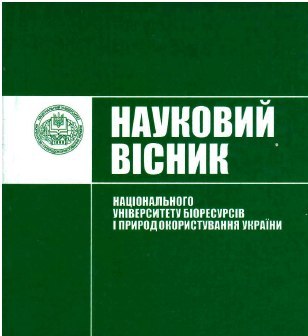Use of video and audio materials in foreign language classes at the construction and design faculty in non-linguistic universities of Ukraine
DOI:
https://doi.org/10.31548/philolog0(276).2017.0117%20-%20124Abstract
The article deals with the use of video and audio materials in foreign language classes at the technical faculty and its efficiency in teaching students themes of professional direction; formation of vocational guidance of future specialists based on watching videos and listening to audio materials. The system of training of qualified
© O. G. Ponomarenko, A. V. Naidonova, 2017
specialists with knowledge of foreign language is the main task of the professional and practical education.
Using audio and video materials at the classes of foreign language allows to maintain a students' keen interest in the study of language and to avoid the monotony that can sometimes occur in the classroom for oral practice in the course of the study technical subjects, students are offered a large amount of lexical material.
The main condition of an effective choice of profession and place of work is the satisfaction of the person's own choice. Success comes if the youth is well prepared for the specific work, has similar life orientations and, undoubtedly, one of the requirements is knowledge of a foreign language. In addition, there is big failure of job prospective when a choice of profession is unconscious. Well-planned and well-organized educational process with using of all modern technologies and methods of studying foreign language is increasingly important to improve career guidance for young people on their technical material. So, knowledge of a foreign language helps them broad their outlook in their prospective.
References
Allan, M. (1991). [Teaching English with Video]. Collection of Scientific Papers, 4, 119.
Altman, R. (1989). [The Video Connections: Integrating Video into Language Teaching]. Collection of Scientific Papers, 70.
Cooper, R., Lavery, M. & Rinvolucri, M. (1989). [Video. Resource Books for Teachers Series, 1]. Collection of Scientific Papers, 1, 45.
Kornelyuk, S.A. (2003). Video na urokah angliyskoyi movy. [Video on the lessons of English]. Collection of Scientific Papers, №35.
Pavlichenko, A.V. (2003). Intensyfikatsiya ta optymizatsiya navchannia angliyskoyi movy v umovah humanitarnoyi himnazii [Intensification and optimization of teaching English in terms of humanitarian gymnasium]. Collection of Scientific Papers, 2, 35.
Tukalo, M.D. (2006). Multymediyni systemy navchannia yak noviy metodologichny zasib interaktyvnogo navchannia [Multymedia education system as a new methodologic method of interactive training]. Collection of Scientific Papers, 2, 64–73.
Fylypenko, S.L. (2009). Suchasni ta innovatsiyni pidhody vykladannia angliyskoyi movy dlia studentiv [Modern and innovative approaches of teaching English for students. ]. Collection of Scientific Papers, 1, 84–93.
Shchannikova L.M. (2008). Osoblyvosti zastosuvannia multimediynyh tehnologiy [Features of using of multimedia technologies in English language lessons]. Collection of Scientific Papers, 2, 84–93.
Tomalin, B., Stempelskiy, S. (1989). [Video in Action, ]. Collection of Scientific Papers, 2, 68.
Downloads
Published
Issue
Section
License
Relationship between right holders and users shall be governed by the terms of the license Creative Commons Attribution – non-commercial – Distribution On Same Conditions 4.0 international (CC BY-NC-SA 4.0):https://creativecommons.org/licenses/by-nc-sa/4.0/deed.uk
Authors who publish with this journal agree to the following terms:
- Authors retain copyright and grant the journal right of first publication with the work simultaneously licensed under a Creative Commons Attribution License that allows others to share the work with an acknowledgement of the work's authorship and initial publication in this journal.
- Authors are able to enter into separate, additional contractual arrangements for the non-exclusive distribution of the journal's published version of the work (e.g., post it to an institutional repository or publish it in a book), with an acknowledgement of its initial publication in this journal.
- Authors are permitted and encouraged to post their work online (e.g., in institutional repositories or on their website) prior to and during the submission process, as it can lead to productive exchanges, as well as earlier and greater citation of published work (See The Effect of Open Access).

